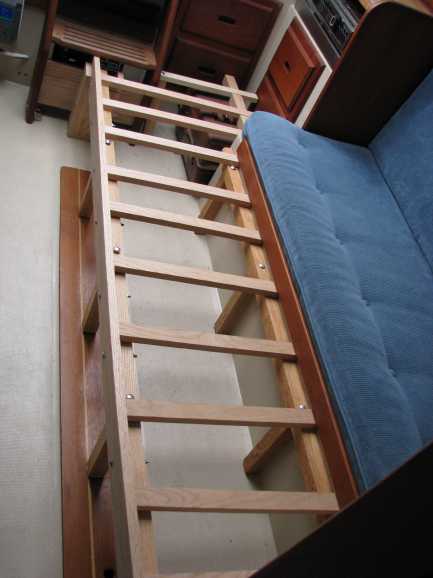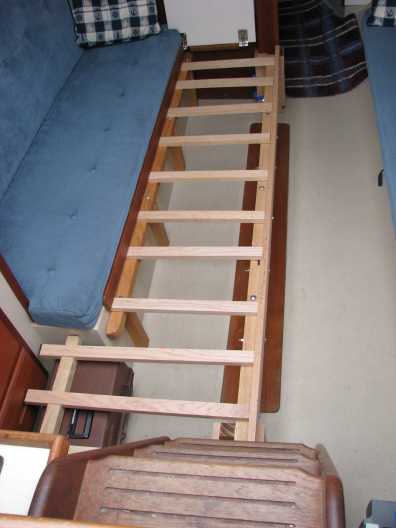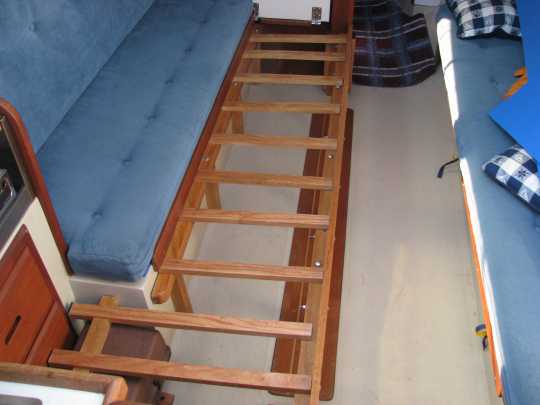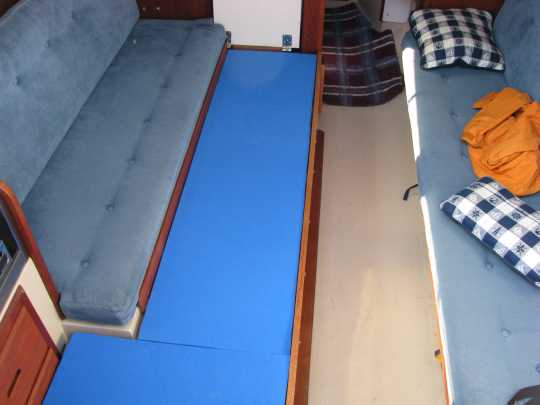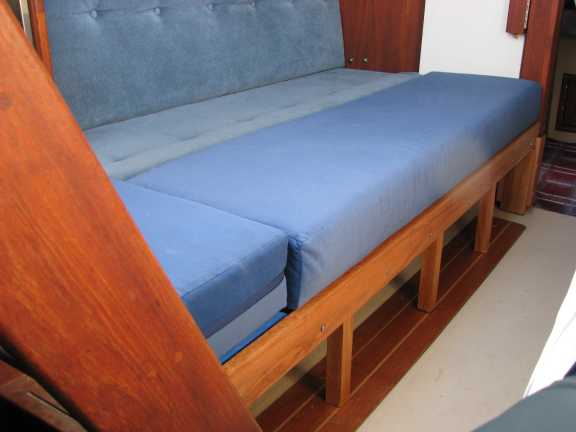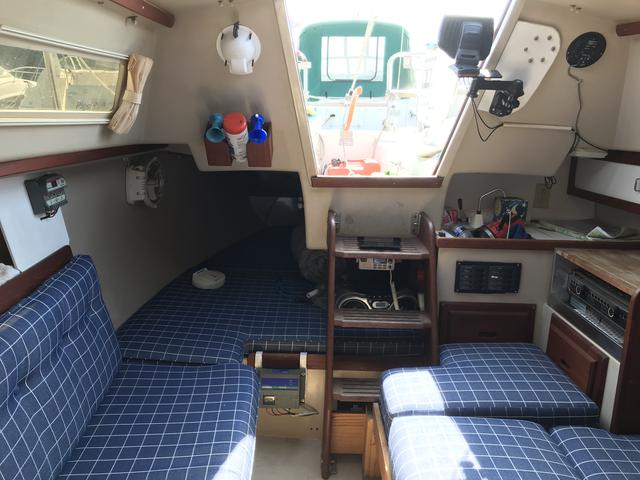Port Side Bunk Extension
Background:
On my 1989 Catalina 25, while I usually get a good night sleep in the quarterberth area, my wife (in the main cabin) does not. The reason for this is that the main cabin seat cushions are not wide enough to serve as an adequate bunk - No place to rest your arms comfortably. There are many that have wrestled with improving the sleeping arrangements in the main cabin seating areas. Some have utilized either a mattress directly on the decking or placed on boards spanning the port and starboard seats. These methods certainly provide wider sleeping accommodations but they block/clutter the entire main cabin area inhibiting access in the main cabin, the Head and VBerth areas. More common has been those that have built an extension to the main cabin starboard side seating area. This bunk extension has merit. It utilizes the full length seating area on the starboard side, widens the seating/bunk area and allows access to main cabin port side, sink and stove areas. The disadvantage of this arrangement is that it inhibits access to the Head and VBerth areas. Access is gained by stepping over the bunk extension near the bulkhead. Less common for bunk extensions has been to utilize the main cabin port side seating area. Since the seating area is sandwiched between the bulkhead (forward) and the stove area (aft), the port side seat is too cramped for legs and therefore, this seating area is generally not considered suitable for sleeping. However, the benefit of utilizing a bunk extension adjacent to the port side seating area is that it allows full access to the main cabin starboard side with an unobstructed passageway to the Head and VBerth areas. As with the other bunk configurations, a port side bunk extension also is a compromise. There are some issues that may need to be minimized, however, a port side bunk extension can provide an excellent sleeping area.
Versatility:
This port-side bunk extension can easily be broken down and stored away. There are no tools needed to undo fasteners and only 3 drop-down carriage bolts need to be lifted out of the rail support columns to remove the bunk extension. Since the bunk extension does not interfere with walk through access from cockpit to VBerth area, I generally leave the bunk extension installed. The table can be utilized with the bunk extension in place but the table support leg would need to be modified. I am planning on installing a shorter table permanently hinged to the bulkhead and that will then resolve any present inconvenience. The access to the galley and drawers is facilitated by removing the small cushion and not having to remove the whole bunk extension.
The main reason that a port-side bunk extension works well even though the existing seat cushion is of short length is that your legs actually have plenty of room to stretch out once the bunk extension is in place. The bunk extension cushions effectively double the width and extend the length of the port side making it a more than adequate sleeping area that can accommodate most individuals. The one danger in building a bunk extension is that once you use the new mattress, you may get tempted to replace all the interior cabin cushions with similar material.
Construction:
The heart of the bunk extension is the design centered around a key slotted 6 foot rail and slotted end supports that make the bunk extension strong, rigid and yet highly portable. The slot design also provides alignment for the three vertical supports, each held in place by a drop down carriage bolt thru a hole in piece #6 into each vertical support. The vertical supports are easily removed for bilge inspection by lifting each of the three carriage bolts and removing the supports. The supports are then easily re-installed. Storing the bunk extension is easy. The three carriage bolts are lifted, vertical supports removed and then the rail lifts out of the vertical forward (at mast) and aft end (under the steps) supports. The rail and end supports can then be stored. The only supports that I decided to permanently attach are the 2" x 2" horizontal rail and vertical supports to the port side seat fiberglass wall. (See photo for details.) These supports do not interfere with seating comfort.
The port bunk extension is constructed of oak hardwood (1"x 2", 2" x 2", 1" x 4" stock) and stainless steel carriage bolts purchased at Home Depot. The 1" x 2" oak slats are attached with Velcro to the bunk extension side rails to provide the direct support of a 1/2" dense foam camping pad material and the 5" thick foam cushions that rest on the slats. Less expensive cushions can be used, however, I purchased custom-made, microfiber covered, medium-firm cushions from www.knoxfoam.com
($260.). These cushions were made to exact dimensions I furnished and provide excellent comfort and support. Access to the galley drawers, sink and stove are facilitated by removing the small cushion and, if necessary, the removal of the small pad and three slats beneath it.
Outside cushions replaced and all cabin upholstery replaced in 2018.

